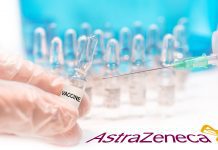
Rosa Castro of the European Public Health Alliance argues for an alternative to a transferable exclusivity extension to address the lack of new antibiotics.
At least 1.27 million deaths were attributable to resistant bacteria in 2019, and many more were associated with it.1Antimicrobial resistance (AMR) is not the next pandemic, it is spreading and causing additional burdens on already strained patients and healthcare systems. The emergence of resistant bacteria is an unavoidable natural phenomenon: mutations in the genetic material of microbes sometimes allow them to evade the action of antibiotics.2 What follows is a continuous need to keep on developing new antibiotics to ensure that medical care – from the most routinary to the most sophisticated, such as organ transplantations or chemotherapy – carries on.
Over the past decades, however, the increasing and uncontrolled use of antibiotics in humans and animals has tilted the balance in favour of resistant bacteria while there is an increasing dearth of new antibiotics. While the development of new antibiotics is a scientifically challenging endeavour, the main explanation for the currently dry pipeline3 is the lack of commercial profits associated with the development of new antibiotics.
Access to existing antibiotics is equally urgent
Inequitable access to existing antibiotics adds an additional (and very significant) burden. Estimations are that the amount of people currently dying due to lack of antibiotics is ten times the amount of people dying from AMR.4 This includes the more than one million children that die every year from infections such as pneumonia, which are treatable with old and cheap antibiotics. Inequitable access and distribution of antibiotics is therefore a major component of the global burden and an additional contributor to the pandemic of AMR.
What are the options to accelerate the development of new antibiotics?
Faced with this reality, and stimulated by the recent experience with the COVID-19 pandemic, different countries, the World Health Organization, and others5 have increasingly paid attention to AMR and started to discuss and test initiatives to accelerate the development of new antibiotics. Apart from incentives to ‘push’ the development of new antibiotics by lowering the research and development costs (such as increased public funding), there is agreement among experts that effective ‘pull’ incentives that reward successful new antibiotics are also urgently needed.
Pull incentives can include payment methods that ‘delink’ the profits or reward from selling new antibiotics from the number of antibiotics that are actually sold. Delinking is crucial, as the use of antibiotics should be carefully regulated to ensure they are not overused or misused and that they reach patients in need. It is therefore important to ensure that sufficient incentives are given for companies to develop antibiotics and manufacture them in a sustainable way to ensure equitable access worldwide. The UK6 and Sweden7, have been testing different payment methods to spur the development of new antibiotics and to ensure that existing ones are available.
Why is the TEE a bad alternative for the EU (and the world)?
As the EU is revising its pharmaceutical legislation, the idea of creating an effective incentive for the development of new antibiotics has gained traction. Among the options being considered is a transferrable exclusivity extension (TEE) promoted by pharmaceutical companies as a pull incentive.8 A TEE would provide a company that brings a new antibiotic to the market with a transferable right, allowing it to extend the exclusivity period for another product or even to sell this right to another company so that it can be used on another product in the portfolio of the buyer. By extending the exclusivity period, a TEE would delay the entry of generic competition, hence bringing a large monetary reward that would provide incentives for companies to accelerate the development of new antibiotics.

Once a company obtains (and potentially sells a transferrable exclusivity extension), they will be free not to place products in some EU markets or to withdraw their products from the market due to commercial or manufacturing reasons
The creation of a TEE via the EU pharmaceutical legislation could, in principle, appeal to EU policymakers as its falls within the competencies of the EU and does not require any budgetary commitment upfront. However, in a recent review of evidence about the TEE and other alternative incentives, we found that a wide majority of experts have warned against the introduction of a TEE.9
Among the significant drawbacks of a TEE are the excessive and disproportionate social costs it could create, which will directly affect European patients and national payers. There is a high risk that a TEE would overcompensate and give a disproportional reward to drug developers while not addressing the real obstacles to the development of a ‘healthy pipeline’.
In addition to being socially costly and potentially inefficient to solve the scarcity of new antibiotics, a TEE would not guarantee much-needed access to new and existing antibiotics. Once a company obtains (and potentially sells a TEE), they will be free to withhold products in some EU markets or to withdraw their products from the market due to commercial or manufacturing reasons.


While the development of new antibiotics is a scientifically challenging endeavour, the main explanation for the currently dry pipeline is the lack of commercial profits associated with the development of new antibiotics
The way forward
Rather than including a potentially inefficient and socially costly incentive, the EU should adopt a coordinated approach to address the problem, from the beginning to the end of the R&D process. A mix of pull and push incentives, including milestone prizes and the coordination of antibiotic pipelines by the newly created EU Health Emergency Preparedness and Response Authority (HERA), in collaboration with similar entities such as the US BARDA, are better alternatives to shape and speed up the development of new antibiotics. Likewise, the creation of a European medicines public infrastructure could provide a more stable solution for the manufacturing of antibiotics and other medicines with low commercial returns. While some of these solutions might not fit in the pharmaceutical legislation, the main goal should be to facilitate the development of new antibiotics efficiently, and consistent with other EU policies and developments across the world. It is worth highlighting that a few countries are moving towards the development of sustainable payment models that might address both the need for new antibiotics as well as their sustainable use and equitable access and distribution. Piloting similar models could provide a better opportunity for the EU and its Member States to contribute to the development of a healthy pipeline of antibiotics while ensuring access to all patients in need. A key lesson from the COVID-19 pandemic is that global threats should be addressed globally.
References
- https://www.thelancet.com/journals/lancet/article/PIIS0140-6736(21)02724-0/fulltext
- https://epha.org/an-overview-of-amr-facilitating-a-one-health-approach-to-this-global-health-threat/
- https://www.who.int/publications/i/item/9789240047655
- Liu L, Oza S, Hogan D, et al. Global, regional, and national causes of child mortality in 2000–13, with projections to inform post-2015 priorities: an updated systematic analysis. The Lancet 2015; 85(9966): 430–40.
- https://assets.publishing.service.gov.uk/government/uploads/ system/uploads/attachment_data/file/992268/G7-health_ ministers-communique-oxford-4-june-2021_5.pdf
- https://www.statnews.com/pharmalot/2022/04/12/uk-antibiotics-antimicrobial-resistance-cost-effective/
- https://www.folkhalsomyndigheten.se/contentassets/c09fd6d5d42243e097be216767686c08/questions_answers_agreements_signed_pilot_study_new_reimbursement_model.pdf
Rosa Castro
Senior Policy Manager for Healthcare Delivery & EPHA Networks Coordinator
European Public Health Alliance
https://epha.org/
https://www.linkedin.com/company/european-public-health-alliance/
https://www.facebook.com/epha.eu/
https://twitter.com/EPHA_EU
https://www.youtube.com/channel/UChyINUW2fw8aUEzZcaVLluw
This article is from issue 23 of Health Europa Quarterly. Click here to get your free subscription today.

























